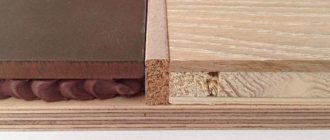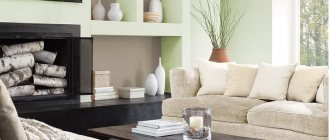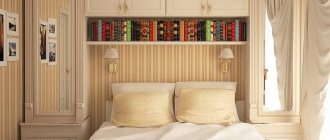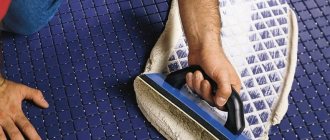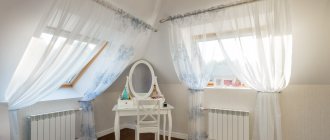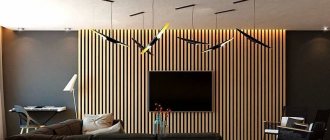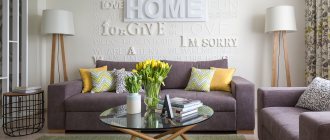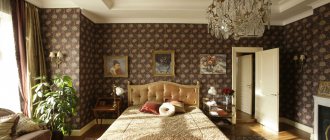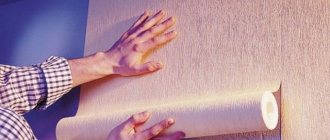Skirting is an important element of finishing any room. It is a mistake to believe that floor planks or ceiling moldings are used only for the purpose of covering joints. In fact, the products have many more functions. For the floor, the plinth can serve as a “holder”: it presses carpet, linoleum, laminate. Wires are passed through the strip with cable channel, and they will no longer spoil the appearance of the room. Thanks to the baseboard, dirt will not appear on the wallpaper when washing the floor.
The planks can be different in color, style, width, shape. White plinth is very popular in the interior; it is easy to maintain and universal in use.
Types and advantages of white plinth
There are various options for fillets on sale, differing in price, material of manufacture, strength and a number of other indicators. Plastic and wooden products are considered the most popular, aluminum and ceramic are less common. For ceilings, skirting boards are made mainly from expanded polystyrene.
White planks are the most widely available in hardware stores. This color is used not only in plastic models, but also among wooden and other types of fillets. The reason for the popularity of white is the versatility of the color, as well as other advantages:
- harmony in any interior, suitability for most styles,
- compatibility with absolutely all colors,
- favorably emphasizing the light, beauty of design and texture of the flooring,
- visual expansion of the room,
- Possibility of painting in the future.
In size, the planks are wide and narrow, in shape - simple, carved, figured. Foam and polyurethane ceiling moldings are often made tall and massive, although there are more “modest” options. Narrow skirting boards create clear boundaries between finishing elements, while wide ones are designed to provide a visual effect of spaciousness in the room.
Plastic floor strips
Such products are most in demand because they are inexpensive and, if necessary, can be easily repainted in any color. Using plastic strips you can refresh your interior at minimal cost. Plastic fillets come in the following types:
- made of PVC (polyvinyl chloride),
- polyurethane.
Installing such products is quick and easy; you can do it yourself. They are non-toxic, comply with environmental and fire safety standards, and are universal: they can be used in the kitchen, living room, and bedroom. Such fillets would be an ideal option in the kitchen: if grease or dirt gets in, they are easy to wash, and even abrasive detergents will not damage the surface. Plastic planks are often used for finishing rooms of non-standard shape.
Wide plastic skirting boards easily hide the imperfections of the walls, although they are not suitable for small rooms; it is better to install narrow fillets in them. The disadvantages of white plastic strips include rapid contamination and fragility: upon impact or falling objects, the product may break. Poor quality fillets will turn yellow over time and will have to be painted or replaced with new ones.
Wooden plinth
Such planks are considered a classic option, appropriate in almost any interior. White wooden fillets look especially good in combination with gilding; they give the room aristocracy and nobility. Wood is an environmentally friendly material that can withstand repeated coating with varnishes, stains, and can be painted. Wooden skirting boards are durable, last a long time and are little subject to mechanical stress. Their disadvantage is their high price; high-quality wood products cannot be cheap.
A more budget-friendly type of wooden fillets are products made from MDF (fine fiberboard). They imitate natural wood, but cost an order of magnitude lower. MDF planks are represented by short elements that are easy to install using special “locks”. Wooden fillets will have to be cut yourself.
Installation features
Even the most inexperienced craftsman can successfully handle the simple procedure of installing an acrylic baseboard on a bathtub. It is first necessary to prepare the surface, which must be cleaned of dirt and thoroughly dried. The work is carried out in several stages: 1. Check how level the bathroom is, if necessary, tighten the legs. 2. Degrease the surface. 3. Measure the length of the bathtub with a tape measure and carefully cut pieces of the required size. It is best to use a hacksaw. 4. The superplinth is glued to sanitary silicone sealant for bathrooms. 5. Having placed the parts on the surface, it is recommended to seal the space adjacent to the corners. This will protect the surface of the bathtub and walls from glue, which will be used in further stages. 6. It is best to use a construction gun to apply sealant. After applying the glue to the curb, it must be pressed firmly to the installation site. 7. Next, you can remove the adhesive tape glued for protection. The relatively simple installation procedure does not take much time. Therefore, you should not rush too much when performing the installation. Accuracy, precision and consistency of movements when performing work guarantee the achievement of a high-quality result. The plinth will be securely fastened, will cover all joints and connections, and will serve for a long period of time.
Choosing a frame for the floor
White floor plinth is a bold solution in the interior. White doors and baseboards visually refresh the room and give it lightness, especially in combination with a black floor. You need to think through the color, location and shape of the planks at the design stage, otherwise the details may turn out to be incompatible with each other. It is important that the color and texture of the plinth harmonizes well with:
- furniture,
- walls,
- decor.
The material for making fillets is no less important than color. For example, when decorating a room in a country style, it is better to purchase wooden planks; for high-tech, products made from modern plastics are suitable; for baroque, MDF or plastic ones with a “tiled” pattern are suitable. The size of the room also plays a big role. Light baseboards are ideal for small rooms as they visually expand the boundaries.
You can also use light planks to match the walls: beige, milky, and cream options look especially good. In general, fillets should not be too conspicuous - they should become a harmonious interior detail that corresponds to the overall concept. If you plan to pass wires through the baseboard, you need to choose products with a cable channel.
Plank to match the color of the flooring
This option for selecting fillets is a real classic. Wooden skirting boards began to be used precisely when wooden floors came into fashion. In addition to aesthetics, using the same material for the floor and planks will provide another important advantage. The same expansion coefficient will not allow the products to deform when compressed and stretched. This will reduce the likelihood of cracks or wood splitting.
Laminate or linoleum floors harmonize perfectly with plastic skirting boards of the corresponding colors. Dark flooring can be complemented with white strips for contrast, while installing doors of the same color or other trim elements. In any case, you need to purchase finishing for the floor and fillets at the same time, and you need to compare their tones only in natural light - artificial light distorts the shades.
We select the baseboard to match the color of the walls
Often the wall covering has a texture that is completely incompatible with the appearance of the fillets. It is easy to select planks for walls only if the wallpaper does not have a complex pattern or texture. A white plinth for completely white walls is only suitable if you do not plan to place a visual emphasis on it, when the product will play an exclusively practical function.
Planks to match the shade of doors and windows
To make the baseboard look like a continuation of the door jambs, you can choose it in accordance with the color of the doors. White doors and baseboards of the same color should also be combined in structure: the ideal option would be to use wood, veneer or MDF finishes. Of the light shades of natural wood, the following are used:
- white acacia,
- bleached oak,
- balsa,
- Linden,
- birch,
- hornbeam,
- aspen.
The choice of shades of white for laminate and MDF is even greater - from alabaster to bleached pine. Sometimes the baseboard is matched to the color of the window frames, although this should only be done if there are large, panoramic windows. Otherwise, the combination will not be visible from behind the curtains, and the slats will look separate and inharmonious.
A few words about materials
White skirting boards can be made from the following materials:
- wood is the most familiar material for many. And the most expensive. Wood harmonizes with almost all types of finishing materials, with the exception of tiles. It withstands several layers of paint and varnish;
- PVC is a material from which a lot of things are made in the modern world of polymers, including baseboards. The products are inexpensive, easy to install, are often equipped with cable ducts and can be of any color;
- polyurethane is also an inexpensive option for skirting boards; it can have any color or be painted.
White wooden plinth in the interior
A couple more examples of white plinth in the interior
White plinth can be made of any material, and it is also advisable to take this into account when choosing. Wood looks good in one style, plastic in another. However, there are skirting boards made from polymers that are visually no different from products made from natural materials.
On a note! The white baseboard can be painted! Indeed, this is another unique property of this decorative element. If you want to get a plinth of an unusual color, then purchase a white one, intended for painting, and apply a special paint to it.
Painting white floor plinth
Video - How to paint a white baseboard?
Skirting color
The color variety of finishing materials is amazing. Planks are available in a variety of colors, halftones and shades. White skirting boards can be left as is and then painted any color. Do not think that white remains the same in all products: due to the varied structure of the material or surface, the skirting boards may look different.
Wood texture
This type of plank is the most popular because the wood texture is ideal for most types of flooring. Floors made of wood or modern wood-look materials are used in Provence, classic, eco, country and many other styles; accordingly, a “wooden” plinth will look beautiful with the floor. The following fillets imitate the structure of wood:
- plastic,
- laminated,
- veneered,
- from MDF.
The choice of shades is huge: from completely white to dark and shades of natural wood (walnut, alder, oak, ash and others). Positano-look plinth finishing is very popular in the classic style. For this purpose, planks made of white wood, cream, beige with a slight gilding or silvering are used. Typically, to create this effect, solid baseboards are painted in appropriate colors.
Stone texture
In rooms where the walls are tiled (bathroom, kitchen, toilet), as well as in castle-style interiors, it is advisable to use plastic skirting boards with a stone texture. The material can be matched to the color of the tile or laminate. Modern fillets quite accurately imitate the shades of marble, granite and other types of natural stone. White fillets look especially advantageous under:
- marble,
- travertine,
- slate,
- dolomite.
In addition, ordinary plastic planks can be painted to look like stone yourself. For this purpose, special paint and craquelure technique are used. First, thick paint is applied to the surface, then it is refined with a sponge, and new shades are added. In large rooms, wide “stone” planks look beautiful. Typically this technique is used in public institutions.
Color options
In addition to white, there are a huge number of colored skirting boards on sale: plain and with patterns and ornaments. You can buy them ready-made or paint them yourself. Products are also laminated with special films. Colored strips are used for a graphic effect in the interior, in the design of children's rooms, and are suitable for avant-garde styles. If you plan to install a colored baseboard, it is selected in accordance with the shade of the pattern on the wallpaper or the tone of the flooring strips.
The appearance of colored skirting boards can also be different:
- matte,
- glossy,
- smooth,
- rough,
- with shagreen,
- enamel,
- metallized.
Selection and installation of plastic skirting boards taking into account the floor covering
The choice of PVC borders and their installation can be carried out taking into account the floor covering:
- under the carpet;
- under laminate;
- universal look.
Skirting boards for carpet and laminate
The plastic element for the carpet is created from an L-shaped profile. To firmly fix the coating, a fabric strip is inserted into a certain groove. Often, floor molding will have adhesive tape to hold the material in place. The last option is also applicable for linoleum floors.
For installation on carpet, laminate or linoleum, an L-shaped plinth is used
Another option for working with carpet is to have a channel on the outside, when the bottom edge is pressed tightly against the surface, and the remaining space is filled with the same material as on the floor. The cable and wires are laid between the plastic and the wall.
Externally, the plinth under the laminate resembles a flat plank with a slightly rounded crown. The thickness should not exceed 15 mm. Such a border is made both without channels for wiring and with them.
Universal skirting board
The model resembles the usual wooden decor. It has a slightly extended edge at the bottom. Outwardly it looks like a “boot”. A dark floor would be a good background for white skirting boards; this technique can be applied to any finishing surface. If necessary, it is possible to use even several cable channels.
Experts consider the presence of a soft pad at the top of the element to be an important advantage of a universal border. This promotes a tight fit to the wall. The interior space is effectively protected from debris and dust.
The secrets of installing a plastic border are almost identical to installing MDF material.
The universal plinth has a flat back wall and fits tightly to the wall when installed
Installation procedure for skirting boards
Instructions for installing skirting boards are to follow the following steps:
- selection of material;
- accurate calculation of the installation area;
- purchasing and delivering selected material to a specific address;
- installation of the border, taking into account technology, type of decor and other equally important nuances.
Choosing a plinth: tips
When purchasing wooden coverings and wood baseboards, you should strive for maximum matching of the shade of the materials. Differences of 1 tone are acceptable, otherwise the external attractiveness of the room will decrease. If necessary, you can paint the baseboard in the desired tone. The width of the products is chosen based on the height of the ceiling - the higher it is, the wider the baseboard should be. Here are the selection recommendations:
| Ceiling height | Skirting width |
| Less than 2.6 m | Up to 70 mm |
| 2.6-3 m | 70-90 mm |
| More than 3 m | From 90-100 mm |
When the white plinth is matched to the color of the doors, it is worth making it and the trims the same width. Ideally, moldings will be attached between the wall and the ceiling to match the planks and be approximately the same width.
Rules of good manners
Experienced designers give a number of recommendations for combining white skirting boards and other room decoration elements.
First rule: light floor and baseboard
Decorating the floor with light finishing materials is a good solution for a small room. Typically, this flooring is used in classic, Provence, and Scandinavian styles. Thanks to the light shades of the flooring and baseboards, the interior will not look overloaded; on the contrary, it will be light and cozy. An example is the bleached oak floor and planks to match it.
Second rule: dark floor and door
It happens that the interior requires the use of dark floor coverings and similar door panels. For skirting boards and trim in such a situation, it is worth choosing light-colored materials of the same texture. It is advisable to use a floor plank at least 80 mm wide.
Third rule: dark floor, light door
It is recommended to purchase light doors if the floor is finished with dark material and the room is small. Light wallpaper, coupled with a white baseboard and the same door panels, will visually make the room lighter and raise the ceiling. Instead of white, you can choose light wood, ivory, beige, or cream for the baseboard.
Fourth rule: a bright door and a mahogany-colored floor
To make the interior of the room more impressive, you can use finishing materials of non-standard colors, which themselves serve as decorative elements. The easiest way is to decorate the floor in a bright, deep color and diversify the picture with a richly colored door leaf. A light baseboard will help complement the interior. This type of design is recommended for the kitchen, hallway, nursery, and hall.

